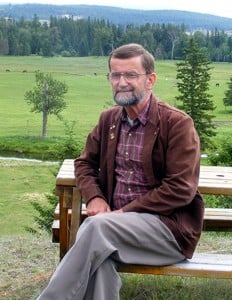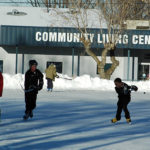Home »

Prescribed burning partly to blame for huge fires
 “Perceptions,” by Gerry Warner
“Perceptions,” by Gerry Warner
Op-Ed Commentary
Incredible as it may seem, the unmitigated fire horror being experienced by thousands of Okanagan and Shuswap residents is nothing new for New Mexico residents to the south battered by a combination of wildfires and fires deliberately set by forest professionals who were supposed to be protecting them.
According to a June 22, 2023, story in the New York Times, US Forest Service employees lit two so-called “prescribed burns” well away from each other in the Santa Fe National Forest north of Albuquerque in April 2022. The fires were lit to clear brush and debris from the forest floor adjudged to be a fire “hazard,” by most foresters.
Ironically, as the case is many times, both prescribed burns or “planned ignitions” as they are usually called leaped out of control and merged into a giant inferno that became the largest forest fire in New Mexico history torching more than 340,000 acres, an area the size of Los Angeles.
Sound familiar?
“I hope those responsible for this catastrophic failure are not sleeping at night,” said Meg Sandoval, 65, who moved into a pickup camper shell after her home was destroyed by the fire. This was followed by a public backlash against the Forest Service immediately after the monstrous blaze. The agency conducts about 4,500 prescribed burns annually and vigorously defends the practice as do foresters in B.C. and the rest of Canada.
New Mexico Congresswoman Leger Fernández said she was furious to learn that the Forest Service had started both blazes. “How could you make the same mistake twice in the same neighborhood?” she asked.
Back in B.C., some Shuswap community residents are asking the same thing about how the Forest Service handled the Lower East Adams Lake and Bush Creek fires that merged into the giant Adams Complex blaze that grew to 41,000 hectares and forced firefighters themselves to flee from one fire camp, destroyed dozens of homes and structures and even burned down the Scotch Creek Fire Hall.
Despite the horrific damage, BC Wildlife Service provincial operations director Cliff Chapman told a news conference Friday the deliberately lit ignition was “largely successful” and saved hundreds of homes from the flames.
However, he acknowledged that not everything went according to plan. “Unfortunately, with the wind that we knew was forecast and that was coming, that fire went above the control line that we burned off from and then swept back into the communities in the North Shuswap.”
Hopefully, after the last embers are doused, this acknowledgement will be examined closely when the government does an in-depth investigation of the firefighting efforts. Certainly, fire crews fought hard and deserve a great deal of credit for their bravery and labour. But that doesn’t absolve mistakes made by their leaders.
I say this not out of ignorance because eons ago I fought forest fires myself setting “back-fires” (planned ignitions) with a drip torch just as they do today.
In my experience these “prescribed burns” only worked when wind and all other conditions were perfect. But conditions are seldom “perfect” in the forest or anywhere else. In fact, winds often change speed and direction causing the flaming conflagration that took place in the Shuswap and it was only blind luck that no one was killed. Worst of all, it caused the fires to expand in size thanks to the unintended assistance they got from the firefighters.
Basically, it caused two already huge wildfires separated by a long strip of unburnt forest to join into one gargantuan blaze aided by the very people supposed to be putting it out.
In my opinion this was an epic blunder by the BC Forest Service, and I defy them to come up with a better explanation. I’m sure they’ll try but given the number of prescribed burns and planned injections that have gotten away in the past, I’d take whatever they say with a large lump of salt.
– Gerry Warner is a retired journalist and former forest fire fighter that has long despaired over mismanagement of our provincial forest lands and the way forest fires are fought in B.C.







